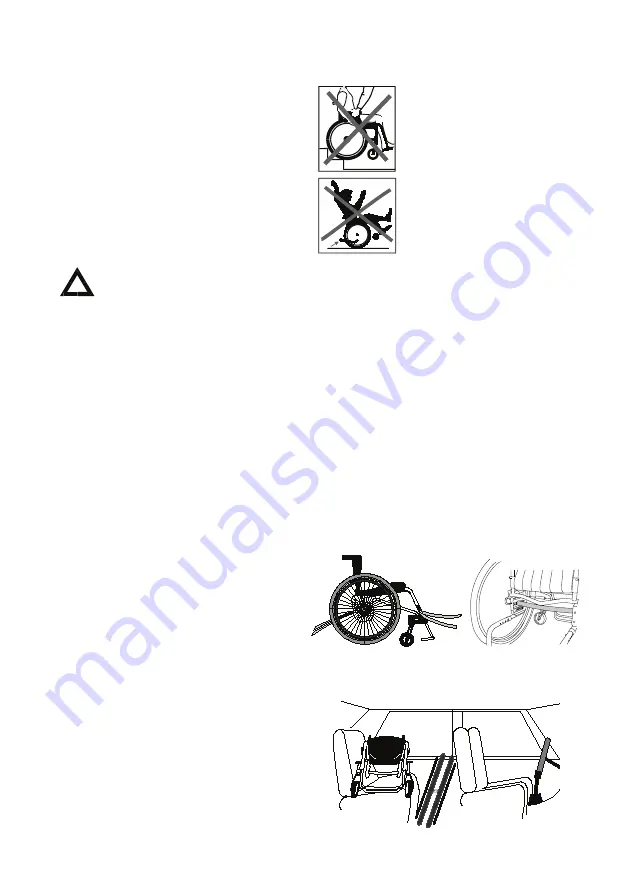
Contents
Page
Car transport ..................................
2
Handling ..........................................
3
Sitting comfort .................................
4-5
Transfer ............................................
6
Handling technique ..........................
7
Troubleshooting table ......................
8
Explanation of symbols
Do not lift the chair
using the armrests.
Risk of tipping:
Always have the
anti-tip stabilisers
down when moving.
When adjusting seat hight, balance-
position or backrest angle, operation of
the anti-tip stabilisers must be checked.
Vehicle transport
Etac’s wheelchairs are crash-tested and approved in
accordance with ISO-7176-19 and ISO 10542, with
attachment features and three-point belts from Unwin.
Etac recommends in the following order:
1) The user transfers to a seat in the vehicle and uses the
vehicle’s 3-point belt while travelling. The wheelchair is
then placed in the boot or safely in the back seat so that
it cannot overturn or roll.
2) The wheelchair is secured facing forwards in the vehicle
as per this manual, the user uses a separate 3-point belt
that is secured in the vehicle. This is the way in which the
wheelchair is tested and approved according to the ISO-
standard for crash testing of wheelchairs in vehicles.
3) According to directive 2001/85/EC, appendix VII, point
3.8.3. there are specially marked wheelchair locations in
vehicles that permit transport with a wheelchair facing in
the direction of travel. If this means of travel is used, the
user/carer must be aware while travelling, prepared for
sudden movements and have the capacity to maintain a
safe sitting position throughout the entire journey. The
user’s disabilities must not be of such an extent that he/
she is not able to hold onto the handles fitted in the
vehicle when there are changes of speed or direction.
Mobility service bus
In conjunction with points 2 and 3:
- a 25668 positioning belt should be used
- a correctly adjusted headrest should be used
- the backrest should be level with or
above the user’s shoulders
- the parking brake should be used
- the anti-tips should be lowered
Tie-down
Car/taxi
•
Ideally, the wheelchair should be placed in the boot.
•
If the chair is placed in the back seat, ensure that it
cannot tip over or move.
Secure it, if possible using the vehicle's seat belts.
2


























